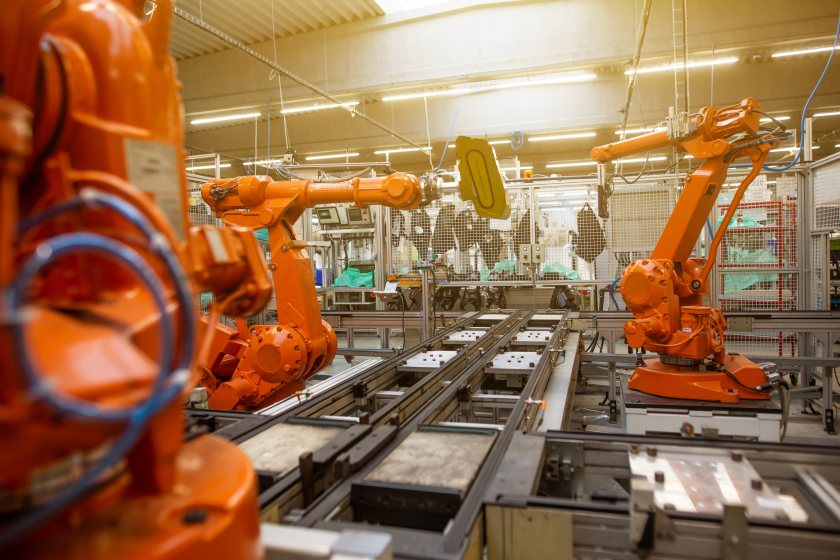How Robotics is Taking Over the Industrial Sector
Robotics has taken over the manufacturing and logistics sectors. Industrial robots help take productivity to the next level, as they operate 24/7 and complete tasks in a fraction of the time it would take a human employee. Conversely, they help improve worker safety and prevent on-site accidents as trained robots perform in hazardous conditions, such as chemical-heavy environments, confined spaces, heavy lifting zones, and extreme temperatures.
Robots help automate mundane tasks such as picking, palletisation, packaging, sorting, and material handling. A study by McKinsey found that 97% of manufacturing leaders cited quality as the most perceived positive impact of industrial automation. The study also revealed that industrial companies plan to invest 25% of their capital expenditures in industrial automation by 2027.
But what happens if a robot becomes vulnerable to a cyber attack?
In this article, we’ll focus on the importance of integrated cybersecurity with industrial robotics.
The Convergence of Robotics and Cybersecurity in Industry 4.0
As industrial robotics becomes a core enabler of digital transformation, the convergence of robotics, AI, and connectivity introduces new layers of cyber-physical complexity. While these advancements improve efficiency, they also expand the attack surface.
Robots can automate most non-human critical thinking manufacturing operations, but also introduce many cybersecurity risks. For example, a malicious attacker can program a robot to override essential safety protocols, wreak havoc on factory floors, manipulate data into quality control systems, cause serious equipment accidents, or halt operations entirely.
A study found that 80% of manufacturing firms experienced a notable increase in overall security incidents or breaches last year.
Even more alarming is that manufacturers face losses of up to $2 million per cyberattack, yet only 45% are adequately prepared to address IT/OT security challenges.
Factor in AI and the interconnected IoT, and the risks amplify even further as industrial IoT devices are prone to exploitable vulnerabilities. An attacker can gain unauthorized access to an IoT endpoint and effectively shut down production for days or longer until critical infrastructure is restored.
Attackers can leverage AI to misconfigure PLCs, overwhelm systems, and analyse operational patterns to carry out a calculated attack.
What else?
AI/ML models embedded in robotics can be exploited if sensor logic is corrupted or training data is compromised. Attackers may rewrite control logic, disable safety mechanisms, and ultimately confuse the robot into making dangerous decisions during production.
The growing sophistication of attacks against OT systems demands real-time, in-context visibility into emerging threats. Static assessments and traditional perimeter defenses are no longer sufficient, and it takes a single impacted IoT device to cause chaos in a manufacturing plant.
Industrial Robotics Use Cases
The U.S. advanced robotics market is expected to hit $16.5 billion by the end of 2024 and grow to $82 billion by 2033.
AI-powered humanoid robots can transform factory floors and manufacturing processes beyond imagination. Intelligent algorithms enable robots, or cobots, to coexist and work alongside humans. South Korea is at the forefront of robotics adoption, with an impressive density of 1,012 robots for every 10,000 employees.
Natural language processing (NLP) and gesture recognition provide robots with pre-programmed instructions to understand speech commands and interpret body language. This AI-powered harmony aims to minimize human error and scale productivity workflows.
Industrial robotics is not a fading trend either.
Gartner predicts that by 2027, 10% of new intralogistics intelligent robots sold will be next-generation humanoid working robots.
What does that mean for manufacturers?
Adaptability is key, but security concerns and industry-specific regulations, such as ISO 10218-1 for industrial robot safety, IEC 62443, and the EU Cybersecurity Act, must be considered for manufacturers to obtain a CE marking in industrial robotics.
Security leaders must anticipate new regulation changes for robot and human safety as AI progresses and laws evolve, particularly in how data is shared.
Best Practices for Securing Industrial Robotics
Cybersecurity must be enhanced in modern robotics systems to prevent safety-critical failures and preserve production continuity. Here are several best practices that can be implemented immediately:
Secure communication: All communication channels should be encrypted to secure data between a robot and the control system. Encrypted IoT devices help prevent attackers from exploiting or escalating critical vulnerabilities.
System hardening: System hardening begins from the code level in the SDLC, where critical unpatched vulnerabilities can escalate into exploitable weaknesses in deployed robotics systems. Secure code reviews should be performed regularly to avoid critical fixes post-production in the development lifecycle. Robotics also involves model hardening techniques, such as adversarial training and input validation, to help protect systems from malicious manipulation. AI models should incorporate multimodal verification, which cross-validates information from multiple sensor types to enhance accuracy and LLM output constraints.
Continuous updates: Ensure operating system updates are applied proactively—before robotic malfunctions or sensor failures occur. Patch management and routine firmware updates should be baked into a proactive security lifecycle. Delayed system updates enable attackers to inject malicious code into robot controllers and alter their behavior to disrupt operations. Start patching early on.
Strengthening access controls: Implement least privilege access to minimize the risk of attackers moving laterally across IT/OT networks and running the risk of infiltrating the robot’s control layer, where they could override critical systems or execute unauthorized commands. Granular permissions strengthen robot security by restricting access to configuration settings and motion controls, common entry points that attackers attempt to exploit.
C2A Security’s Role in Risk Management for Robotics
C2A Security’s EVSec platform delivers a comprehensive approach to cybersecurity across complex, connected systems – combining deep industry expertise with automation-driven risk management. Whether securing intelligent machines, protecting software integrity, or ensuring compliance across operational environments, EVSec provides complete visibility and control throughout the system lifecycle:
Evolving Threats Require Continuous Risk Visibility – C2A Security’s EVSec platform delivers continuous threat exposure management, enabling manufacturers to detect, prioritize, and respond to risks as they evolve – without slowing down production.
Built for Compliance – Cybersecurity in industrial robotics is no longer optional – it’s a regulatory mandate. Standards like IEC 62443, ISO 10218-1, and the EU Cybersecurity Act shape the operational and certification landscape. EVSec supports automated compliance workflows, helping robotics OEMs and their suppliers streamline documentation and accelerate audits. Manufacturers can confidently scale across regions and product lines with support for multi-standard frameworks.
Automation is Key to Resilient Robotic Systems – Manual security processes can’t keep up with innovation in industrial environments. EVSec platform leverages AI-driven security orchestration and contextual automation to close the vulnerability detection and mitigation gap. Whether securing PLC firmware, verifying AI model integrity, or analyzing control logic for tampering, EVSec ensures that cybersecurity keeps pace with production schedules.
A Lifecycle Approach – Effective protection doesn’t stop at deployment. C2A enables a continuous security lifecycle – from initial development through integration, deployment, and field updates. This ensures robotic systems remain secure even as new software components are introduced, third-party modules are integrated, or remote updates are delivered. With EVSec, manufacturers gain lifecycle-wide assurance across all cyber assets.
Schedule a demo to learn how C2A Security can help streamline cybersecurity against AI-driven risks and advanced threats to protect your attack surface.







